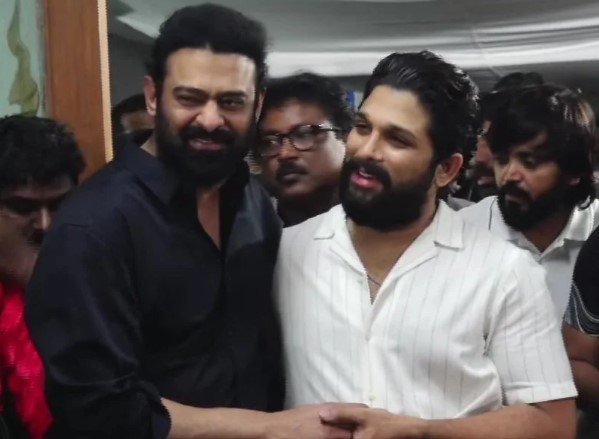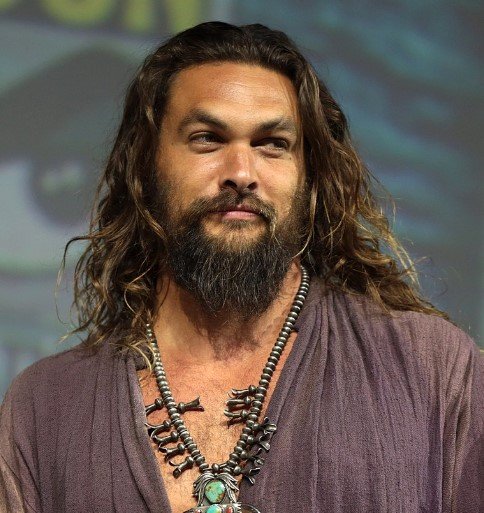By R Jagadeeswar Rao
Hyderabad: In a world driven by fashion trends and cultural icons, a peculiar yet captivating phenomenon has taken center stage—Pogonotrophy. As often highlighted by the eloquent Congress MP Shashi Tharoor, the term refers to the cultivation and styling of facial hair, from beards and mustaches to sideburns. Tharoor has stirred the political pot by quipping about Prime Minister Narendra Modi’s well-groomed beard, calling it a “pandemic preoccupation.” Yet, it seems the pogonotrophy bug has bitten more than just politicians- it’s sweeping through film industries, political corridors, and the global stage.
From Silver Screen to Political Arena: A Growing Trend

The Telugu film industry, a major influencer of style and culture, stands as a testament to the beard revolution. Leading the charge is Allu Arjun, whose rugged look in the blockbuster Pushpa series, complete with a thick beard and his now-iconic gesture of passing his left hand through it, has sparked a wave of imitators. Not far behind are Ram Charan and N.T. Rama Rao Jr., who showcased their macho, bearded personas in the magnum opus RRR. Even the celebrated director S.S. Rajamouli is known for his signature salt-and-pepper beard.
Not limited to the silver screen, this potonotrophy wave is just as visible in political circles. In Telangana, Chief Minister Revanth Reddy and his colleague Uttam Kumar Reddy showcase contrasting beard styles—one meticulously trimmed and the other flowing. Meanwhile, in Andhra Pradesh, Chief Minister Chandrababu Naidu sports his distinct beard, while his son and Minister Lokesh follows the trend with a youthful, salt-and-pepper look. Even political heavyweight and cinema icon Pawan Kalyan, now Deputy Chief Minister, dons a luxuriant mane of facial hair, reinforcing the notion of beards as a symbol of power and masculinity.
Masculinity, Fashion, or Intellectual Statement?
This phenomenon isn’t merely about following a fad; it taps into deeper socio-cultural connotations. In South Indian culture, beards have long been associated with wisdom and intellectualism. The saying goes, “Most intellectuals sport a beard, but not all who sport a beard are intellectuals.” This perception has evolved, encompassing elements of masculinity, fashion, and even political identity.
Prime Minister Narendra Modi is perhaps the most prominent icon of potonotrophy in Indian politics. His meticulously maintained, stylishly trimmed beard has become synonymous with his image, influencing countless followers. Tharoor’s playful remark aside, Modi’s beard symbolizes a blend of tradition, authority, and contemporary style, making him a true potonotrophy icon.
Tinseltown’s Love Affair with Facial Hair
Beards have not only redefined political personas but also reignited a macho charm among film stars. The ever-youthful Akkineni Nagarjuna and his two actor-sons are prime examples of potonotrophy’s grip on Tollywood. Even Bollywood isn’t immune; stars like Ranveer Singh, Shahid Kapoor, and Hrithik Roshan frequently sport dapper beards, influencing fans nationwide.
Beyond Borders: A Global Trend

Potonotrophy isn’t confined to Indian shores. Globally, style icons and influencers, from Hollywood stars to sports legends, are embracing facial hair. Be it the ruggedness of Jason Momoa or the sophistication of George Clooney, beards have become the embodiment of modern masculinity.
Zeitgeist of the Times
Beards, once a symbol of intellectualism or rebellion, have transformed into a mainstream style statement, echoing the zeitgeist of the contemporary man. Whether it’s to assert power, exude charm, or simply to be on-trend, pogonotrophy is here to stay.
As more and more men—from film stars and politicians to everyday youth—embrace facial hair, the question remains: Is it just a style statement or a deeper expression of identity and power? One thing is certain—the potonotrophy phenomenon is redefining masculinity, one beard at a time.
The Final Word
From Allu Arjun’s rustic charisma to Modi’s dignified style, the pogonotrophy phenomenon transcends genres, professions, and generations. In the end, beards are no longer just facial hair; they are cultural statements. And as the trend grows, so does the conversation about identity, masculinity, and modern fashion.
So, whether you call it pogonotrophy or simply a beard trend, it is indeed the zeitgeist of our times.


